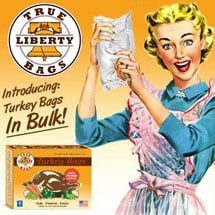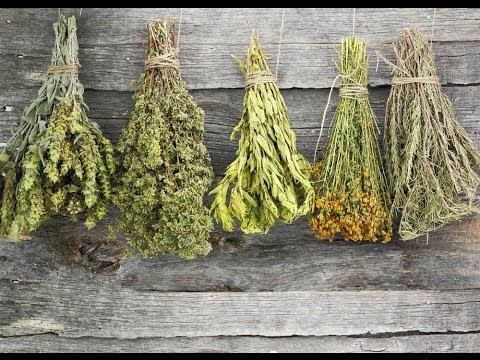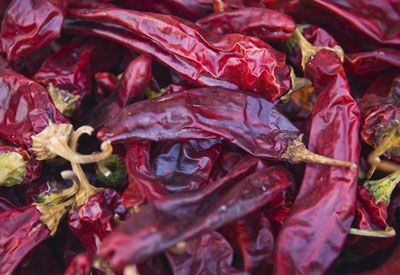Drying vegatables and fruits has distinct advantages over canning, freezing or completely different preserving methods that require extreme temperatures. Dried meals require little if any energy to retailer as compared with frozen objects that require refrigeration and canned objects requiring cooking and container boiling.
Dried vegatables and fruits weigh a lot much less and take up a lot much less shelf space than canned. They protect most dietary nutritional vitamins and minerals greater than canning or freezing. They don’t lose fiber. And they also don’t lose style. They focus it.
Some produce not often preserved by canning and or freezing — assume banana — is particularly suited to drying. Drying heirloom tomatoes and completely different produce out of your yard provides you dried delights that you simply simply gained’t uncover in grocery outlets. One different plus: dried vegatables and fruits, if processed appropriately, will maintain longer than these canned or frozen.
Biggest, the meals you dry your self are lots cheaper than these you buy in outlets. One different plus: in distinction to the store-bought dried vegatables and fruits you understand how the they’ve been processed and what parts have been (or weren’t) added.
Modern meals dehydrators have made residence fruit and vegetable drying comparatively quick and useful. Nevertheless long-practiced methods of outside drying, launched up to date with fashionable experience, are environment friendly and energy saving. Oven drying, though not as setting pleasant, continues to be trendy for uncommon, small batches.
Preparing meals for drying — stopping discoloration of fruits and blanching greens — is a important step it would not matter what drying method you make the most of. Right storage extends the lifetime of dried vegatables and fruits far previous these frozen or canned. Proper right here’s what you could possibly know to get started drying yard produce at residence.

SAVE YOUR HARVEST!
Harvest Supplies
Defend and defend your harvest with drying racks, meals storage baggage and far more!
View all
Don’t waste your yields! Our harvest gear and storage supplies will defend your treasured bounty — whether or not or not home-grown herbs, seasonal fruits or sun-dried tomatoes — conserving it safe from mud and molds until ready to utilize.
Concepts of Drying
Drying extracts moisture from vegatables and fruits. Eradicating this moisture inhibits the micro organism, molds and completely different microorganisms that set off spoilage. Drying at right temperatures retains the pure enzymes and as well as prevents enzymatic deterioration all through storage.
Two complementary parts facilitate the drying: heat and humidity. Warmth and fewer humid conditions encourage the quickest drying. Right air circulation permits heat and low humidity to do their job quickly and successfully.
Holding temperatures spherical 130-140 ranges dries most produce quickly whereas preserving its dietary content material materials. (Drying meat and making jerky (PDF) requires explicit methods and higher temperatures.)
Air circulation — shifting the evaporated moisture away from the meals — facilitates quick drying. The additional ground uncovered to shifting air, the earlier and additional setting pleasant the drying. Skinny slicing and leaving space spherical your drying produce is critical. Certainly not stack or crowd fruit or greens which could be drying in an try to course of larger than your gear can efficiently keep.
Meals dehydrators have made drying fruit and greens simple. A meals dehydrator with heating facet, thermostat and blower lets you administration drying conditions. Drying meals naturally outside requires every the exact conditions and a stage of care. Every indoor and out of doors methods require a measure of consideration.
Exterior Drying
The observe of drying vegatables and fruits throughout the open air goes once more to the beginning of recorded time. The label “sun-dried” has develop into a connoisseur go-to, giving panache to apricots, mangoes and significantly tomatoes. Exterior drying doesn’t require lots gear — merely the trays or completely different assist for what you’re drying — nonetheless it does require explicit, minimal conditions.
Fruits, along with strawberries, apples, grapes and cherries, with their comparatively extreme sugar and acid content material materials, are good candidates for out of doors drying. The set-up could be as simple as an over-turned plastic milk crate or a mesh window show set on bricks or concrete blocks. Setting the blocks on a tarp may assist maintain mud down.
You should purchase clever set-ups which will air-dry vegatables and fruits indoors or out.
Do not use mesh trays produced from aluminum or these which have been galvanized.
Thinly sliced fruits may be sun-dried on cookie sheets and completely different flat, non-reactive surfaces. Cowl the fruit with a white Turkish towel and place it the place the photo voltaic can impart its warmth (even inside).
Some areas of the nation, along with the humid South and the moist Pacific Northwest, aren’t conducive to photo voltaic drying. Daytime temperatures above 85 ranges are finest. Humidity beneath 60% is a necessity.
In areas of intense photo voltaic along with the desert Southwest and the Rocky Mountain, high-altitude states, fruit being dried must be shaded to cease deterioration of dietary nutritional vitamins and helpful enzymes. If bugs are a difficulty, defend drying fruit with mosquito netting.
Most meals, along with fruits (significantly these with pores and pores and skin left on) and shelling beans, require remedy sooner than they’re photo voltaic dried to kill bugs and their eggs. Try this by placing sliced fruit or beans throughout the freezer for two days. Or they’re usually dealt with in an oven set to 160 ranges for one-half hour. Confirm the oven temperature with an oven thermometer. Even at lowest setting, many ovens shall be hotter than 160 ranges and can cook dinner dinner the meals.
Hint: Salt tomato slices when inserting them out to dry. The salt not solely improves style nevertheless helps draw out moisture.
Picture voltaic drying concentrates the photo voltaic’s rays to maximise heat and air movement. A simple setup overlaying drying trays with clear plastic (whereas allowing for air circulation) to increase heat can work surprisingly successfully with the exact conditions. Whereas its observe is historic, fashionable advances in solar-generated electrical power make it an an increasing number of modern experience with its potential for off-the-grid drying with a heating facet and fan.
There’s moreover ingenious low-tech plans for self-contained photograph voltaic models that purchase sun-warmed air and ship it as a lot as trays the place fruit is drying.
Indoor Drying
Processing vegatables and fruits in a meals dehydrator is actually probably the most useful and environment friendly strategy of drying. It’s moreover primarily probably the most energy intensive, using electrical power to run a heating facet and fan.
Dehydrator packing containers keep a set number of screened trays on which the meals is positioned. Bins are designed to hold an optimum number of trays with out hindering air circulation. Heating parts and followers current the warmth and humidity administration required for setting pleasant drying.
Properly-designed dehydrators are sufficiently vented, offering strategies for moist air to flee. A appropriately vented meals dehydrator dries produce additional persistently and evenly.
Dehydrators should have an right thermostat which will protect finest temperatures, usually throughout the 130 (or lower) to 145 diploma differ. Must you plan to make meat jerkies, the heating facet ought to be capable of sustaining temperatures of 145 ranges and above.
Some dehydrator packing containers are insulated, sustaining warmth with a lot much less electrical power. Place your dehydrator the place the escaping warmth air will most interesting contribute to the heating of your kitchen and shut by areas. When deciding on a dehydrator, be sure that to take heed to it run earlier than you buy. You’ll need a dehydrator with a quiet fan.
Though usually extolled throughout the on-line press, oven drying usually yields an inferior result in every top quality and weight loss plan retention. The low oven temperatures required are laborious to maintain up and some ovens gained’t even be capable of the settings of 150 ranges or lower. Oven drying usually ends in a drier, additional discolored product.
That talked about, you probably can effectively dry small fruits like cherries in small batches, even when it requires conserving an in depth eye in your oven and turning it off when an oven thermometer — not the one on the vary’s administration panel nevertheless the one you buy and put contained within the oven — approaches 150 ranges.
The true work proper right here is pitting and halving the cherries. It takes a really very long time and just a little little bit of persistence to fill a cookie sheet with halved cherries, even when leaving a great deal of room for air circulation. Brush the pan with just a little little bit of grape seed oil for individuals who’re apprehensive the cherries could stick. Start with the cherries pores and pores and skin side down and swap them over an hour or two alongside the best way by which.


Choosing and Preparing Fruits and Greens for Drying
Biggest outcomes come from probably the greatest produce. Don’t use bruised apples or fruit that’s earlier ripe (most interesting is fruit merely sooner than it’s absolutely ripe). Don’t use woody beans, peas earlier their prime or over-sized zucchini. No kind of preservation will ever make them greater than they as quickly as have been.
Most greens must be trimmed to measurement then blanched or steamed sooner than drying. Beets are an exception. Roast them throughout the oven and take them out as rapidly as they’re cooked all by sooner than slicing and drying.
Ascorbic acid (Vitamin C) and citric acid are typically used as a pre-treatment to take care of fruits from browning. Throughout the nice info to drying (PDF) revealed by Pacific Northwest Extension, there’s a chart that lists pretreatment recipes for preserving coloration and vitamin retention along with “enhanced pathogen” administration (scroll by the use of to net web page 7).
Honey dip is a tried and true remedy to cease discoloration. Dissolve one half cup sugar to one-and-a-half to 2 cups of boiling water. Allow to relax sooner than stirring in a half cup of honey. After dipping fruit slices throughout the warmth mixture, allow to set and drain a minute or two sooner than placing on drying trays. Parchment paper may assist proper right here.
Sulfuring fruit could be the only choice to cease discoloration whereas drying. The sulfur the fruits are uncovered to is claimed to dissipate all through the drying course of. These of us who’ve eaten our share of sulfured fruits by the years can attest to post-digestion proof that it would not.
Sulfuring may be significantly robust. The fruit is “smoked” with U.S.P. grade (pure, pharmaceutical) sulfur, a course of that moreover helps defend style and maintain bugs away all through the drying course of. Utah State Faculty Extension supplies an in depth check out sulfuring (PDF, net web page 9) of their on-line full info to meals drying. Certainly not try to sulfur fruits in your oven or anyplace else indoors.
One different numerous is to soak fruit in sodium bisulfite. You must positively use solely meals grade bisulfite, obtainable from wine-making present outlets. Some people are delicate to sulfites and their consumption could trigger excessive reactions. Be further cautious. The Faculty of Georgia Cooperative Extension Service has an in depth booklet (PDF) on drying that options explicit pre-treatment directions for explicit vegatables and fruits, the whole thing from nectarines to okra, at its end. Value attempting out.
Looking for to dry herbs? Go proper right here.
